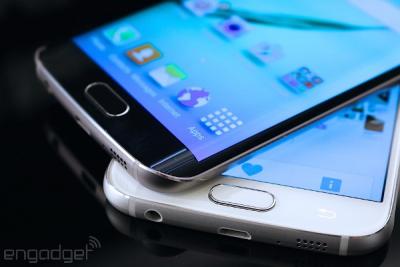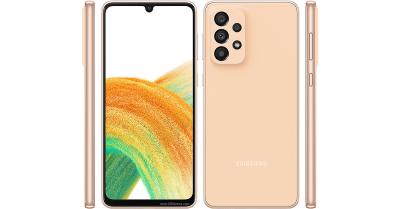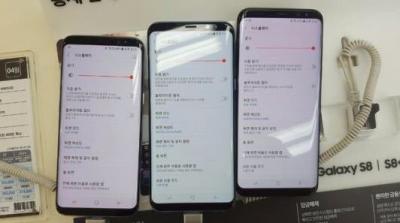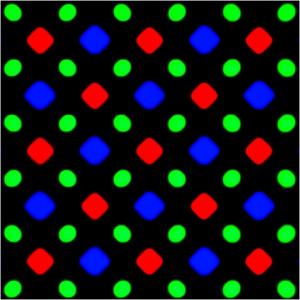Pentile OLEDs: introduction and market status
Pentile RGBG matrix technology explained
Samsung's Pentile matrix technology is a sub-pixel design architecture family. The basic Pentile structure is the RGBG matrix. In RGBG Pentiledisplays there are only two subpixels per pixel, with twice as many green pixels than red and blue ones. You can see a Pentile matrix vs a Real-Stripe one on the images below (the Pentile is on the right):
The Pentile technology was commercialized by Clairvoyante. In March 2008, Samsung bought the company's Pentile related IP and technology, and formed a new company called Nuovoyance to continue development of this display technology. Here's an image from Nuovoyance showing Pentile vs RGB matrix (which they call a 'legacy' matrix):

Pentile relies on the human eye design - if you reduce the number of blue sub-pixels, you barely reduce the image quality. There are other advantages to Pentile displays (for example longer lifetime, which will be explained below). But even Samsung admits that a real-stripe RGB matrix is better than Pentile, for example here's some marketing image from Samsung showing how a non-Pentile display (the Super AMOLED Plus) is better than the Pentile Super AMOLED:

Some people indeed do not like Pentile displays. Mostly it seems because there is a visible pattern when you look at the display up close. Your eyes get used to this pattern quickly though, and the higher resolution the display is, the less visible the pattern is. Modern Pentile OLED displays reach very high pixel densities that make it virtually impossible to notice the pattern.
Samsung's AMOLED and Super AMOLED displays
Samsung uses Pentile t chnology in virtually all of their Super AMOLED displays, which are used in most of the company's smartphones - including the Galaxy S7 and S7 edge.

Diamond Pixel Pentile
Samsung's latest Super AMOLED displays (and also some AMOLEDs from different makers) adopt a different subpixel arrangement called Diamond Pixel. The first phone to use this Pentile type was the Galaxy S4 (later phones adopted a slightly different Diamond pattern).
![]()
In a Diamond Pixel display, there are twice as many green subpixels as there are blue and red ones, and the green subpixels are oval and small while the red and blue ones are diamond-shaped and larger (the blue subpixel is slightly larger than the red one). The diamond shapes were chosen to maximize the sub-pixel packing and achieve the highest possible PPI. The greens are oval because they are squeezed between the larger red and blue ones.
Pentile displays last longer
One of the advantages of Pentile displays is that they last longer. In fact today this is one of the major reasons Samsung are using Pentile for high-resolution (over 230 ppi) OLEDs. Read here for Nuovoyance (Samsung's company in charge of Pentile) explanation.
Further reading
- Introduction to OLEDs
- Super AMOLED displays
- Samsung's OLEDs
- The OLED Toolbox, one-stop-shop for OLED information, analysis, data and guides
Samsung launches three new AMOLED phones, the A33, A53 and the A73
Samsung announced three new Samsung Galaxy phones, in its popular mid-range A-series. First up is the Galaxy A33 which features a 6.4" 90Hz 1080x2400 Super AMOLED display, and the second is the Galaxy A53 which features a larger 6.5" 120Hz 1080x2400 Super AMOLED display.

Most interesting is the Galaxy A73,which sports a 6.7" 120Hz 1080x2400 Super AMOLED+. It is not clear what Samsung refers to as a Super AMOLED+, it could be a non-pentile display like the old Super AMOLED Plus displays.
A macro photo of the Nintendo Switch OLED shows it is not a Pentile display
A few days ago Nintendo started shipping its anticipated Switch OLED gaming console, with its 7-inch 1280x720 OLED display. The console costs $349.99, and initial reviews find the display to be an excellent improvement over the LCD used in the previous model.

This is an interesting sub-pixel structure, quite similar to the one used by the Apple Watch - and also to Samsung's S-Stripe displays (for example the one used in the Galaxy Note II). This is not Samsung's standard architecture for mobile devices, the Pentile display (or Diamond Pixel structure).
Tianma demonstrates its latest foldable, flexible and rigid AMOLEDs at SID 2018
Tianme had an large booth in SID, showcasing many display technologies and demonstrating its latest LCD and OLED panels. Tianma started producing rigid and flexible OLEDS in April 2017 at the company's 6-Gen fab in Wuhan, and at SID the company demonstrated its 5.5" on-cell rigid AMOLEDs now in production. Tianma told us that this display was adopted in smartphones by Lenovo and Asus.
Tianma also demonstrated several flexible OLEDs in many configurations which we will list below. Almost all of the panels were based on the same basic display - a flexible 5.99" WQHD 1440x2280 (537.5 PPI) AMOLED produced on a polyimide substrate. Tianma showed this panel in a regular design, and also in a notch-type design.
The iPhone X has a different diamond pixel structure than Samsung's Galaxy displays
Samsung introduced the Diamond Pixel display architecture back in 2013 when it launched the Galaxy S4 smartphone, and since then it has adopted this sub-pixel scheme in all of its OLED displays (replacing the previous PenTile scheme).
![]()
The 2014 Galaxy S5 introduced a different Diamond Pixel scheme which Samsung uses till today. DisplayMate tested the Apple iPhone X and it turns out that Apple's OLED, even though it is produced by Samsung Display, uses a slightly different Diamond Pixels - the fill factor of Apple's display is higher than in the Galaxy phones. You can see the two different displays in the macro photos above (courtesy of Display Mate). The iPhone X OLED is on the left, while the right shows the Galaxy OLED.
Red Gate: is there a problem with Samsung's latest OLED panels?
Samsung started shipping its Galaxy S8 and Galaxy S8+ phones in Korea, and some of the first customers are complaining that the display have a reddish tint - which did not go away even after correcting the color display settings. This issues was quickly labeled as "Red Gate"... will Samsung face a new crisis?

Samsung itself says that there are no quality issues - and that the problem can be adjusted. Customers are welcome to replace their device, though, at service centers in Korea.
SDC developed a 806 PPI OLED display for VR applications
Samsung Display developed a new high-resolution OLED display, specifically for VR applications. The 5.5" panel, on display at SID DisplayWeek, sported a 3840x2160 resolution - or 806 PPI. The panel offered a brightness of 350 nits and a color gamut of 97% adobe RGB.
This is the highest resolution mobile phone sized OLED ever demonstrated, and it exactly matches the highest resolution LCD - Sharp's 5.5" 806 PPI IGZO panel unveiled in 2015. Samsung's display probably uses some sort of PenTile architecture, though, so actual sub-pixel count is smaller.
eMagin reports their financial results for Q3 2015, updates on direct-emission displays and AR/VR efforts
eMagin, the OLED microdisplay maker, reported their financial results for Q3 2015. Revenues were $5.4 million - down from $7 million in Q2 2015 due to a decrease in both product sales and R&D contract revenue. Net loss was $2.2 million, and eMagin currently has $5.1 million in cash and equivalents.
 An eMagin OLED microdisplay
An eMagin OLED microdisplay
eMagin decreased its revenue guidance for 2015 and now anticipates annual revenues of $24 million or above. A couple of months ago eMagin has entered into an agreement with Craig-Hallum Capital Group that will allow them to raise up to $4.5 million.
Tianma shows a 5.5" Full-HD AMOLED prototype
The OLED Association reports that Shanghai Tianma demonstrated a new 5.5" Full-HD (400 PPI) AMOLED prototype. This is the highest-resolution display ever shown by the Chinese display maker, and reportedly they have adopted a subpixel scheme not unlike Samsung's Pentile technology. To achieve the high resolution, Tianma developed a dual-FMM technology in-house.

Tianma has been developing LTPS AMOLED technology for quite a while, and according to our information they are getting ready to release the first panels in 2016. Tianma has plans for three separate OLED production lines.
DisplayMate: the OLED displays in Samsung's new tablets are the best tablet displays ever tested
DisplayMate posted yet another interesting display shoot-out, this one testing Samsung's new QHD (2560x1600) Super AMOLED displays used in the upcoming Galaxy Tab S (8.4 and 10.5) tablets. As these displays are very similar to the GS5 display, it's not surprising that DisplayMate found those tablets to offer the best performing displays ever. This is yet another testimony to how great OLED displays are - and the rate of improvement in OLEDs is very rapid.

As DisplayMate found out, the Galaxy Tab S establishes new records for best Tablet display performance in: Highest Color Accuracy, Infinite Contrast Ratio, Lowest Screen Reflectance, and smallest Brightness Variation with Viewing Angle. These are also the highest resolution tablets at QHD.
The GS5 Diamond Pixel architecture is not the same as the GS4
When Samsung first released the GS5, we thought the 5.1" FHD Super AMOLED display is pretty similar to the 4.99" FHD one used in the GS4. But DisplayMate found out that this is a much superior display in many aspects, one of them being that it is 27% more efficient.
 GS4 subpixels GS4 subpixels |
Samsung told DisplayMate that the improvement mostly came from more efficient OLED materials. They also incorporated new display electronics and optics and that helped as well. But now Chipworks posted a teardown of the GS5, and they published a macro image of the display's sub pixels. It turns out that it's a different architecture than the GS4, and this may explains some of the performance boost, too.
Pagination
- Page 1
- Next page

